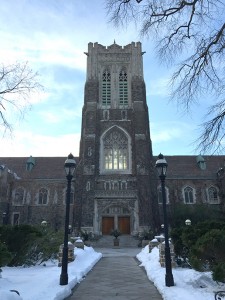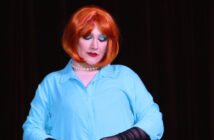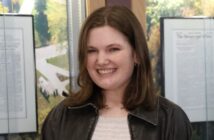
The Alumni Memorial Building is covered in the snow after Winter Storm Jonas on Sunday, Jan. 31, 2016. Students who are admitted for the spring semester have a different orientation from other students. (Chris Barry/B&W Staff)
Hundreds of first-year students move to South Mountain and start a week-long orientation process every August. Another group of students, known as “special population” students, experience a similar orientation in January.
The special population students include transfers, commuters, international students and January-admits, who are students who are accepted for the spring semester as opposed to the fall semester.
Lehigh has changed the orientation process over the past few years for these special populations for the program to better fit their needs.
In the fall of 2015, the transfer orientation process was not well-received, according to Julie Metkus, a Fall 2015 transfer student.
“It was kind of a mess to be honest,” Metkus said.
Metkus said two of the Orientation Leaders assigned to the group of transfer students didn’t know they would be leading the transfer group until the first day of orientation, and the transfer students were treated more like first-year students rather than sophomore transfer students.
“It was also weird because I had already gone through orientation before at USC,” Metkus said. “So I kind of knew all the stuff they were telling me and I just feel like it wasn’t that effective in catering to the actual transfer students.”
Rachel Davidson was a January admit in 2014.
“It’s kind of hard because you get to campus and it feels like everyone already has their friend group and stuff like that,” Davidson said. She was overwhelmed when she got to Lehigh in January and discovered she only had a few hours of orientation.
“Four hours of orientation — I’m sure most people would be like, ‘That’s too much,’ but really it’s not enough,” she said.
Metkus and Davidson both are now training to be transfer Orientation Leaders for August 2016.
After some negative feedback, the January-admit program was changed last year from a one-day orientation in January, to a two-day program, said Stefanie Burke, the assistant dean and director of first-year experience.
“We are putting a renewed focus on it to make sure that those folks are trained and they’re thinking about those students and that is their top priority,” Burke said.
Students now come in December and then again the day before school starts in January. In December, they can meet with their academic adviser and plan their classes, which is something that was not offered in previous years, Burke said. The orientation for transfer students has also been altered.
“Instead of it being a last minute thing, which is what it was like when I went through it, it’s been a lot more planning and much more focus on the special population,” Metkus said.
Emily Motola, a Fall 2015 transfer student, said the orientation program she experienced seemed to be tailored to her position as a transfer.
“We’re making sure this experience is different,” Burke said. “So we really try to cater it to them and what they need.”
Lehigh does not require transfer students to attend 5×10 events as they do for students who begin school in August, but this year many of the transfer students thought the events were required. Motola believes this miscommunication was a good thing for the transfer students.
“It was an excuse for all transfers to meet up and go together,” Motola said.
Metkus and Davidson are overseen by Jeremy Sordan, orientation coordinator for special populations. Sordan, like Davidson, was a January admit and said the transition process was difficult for him.
“Coming in as a transfer is obviously intimidating because everyone has been here since freshman year and has friend groups already,” Matkus said. “I just think its important to have someone that understands what that is actually like and can be a resource.”
Metkus decided to become an Orientation Leader because she wanted to change the program.
“I feel like I can definitely make a difference in the lives of these transfer students to try to help and revamp the program a little bit,” Metkus said.
“I wanted to try to change the way the Jan-admit orientation works since I wasn’t super thrilled with it,” Davidson said.





Comment policy
Comments posted to The Brown and White website are reviewed by a moderator before being approved. Incendiary speech or harassing language, including comments targeted at individuals, may be deemed unacceptable and not published. Spam and other soliciting will also be declined.
The Brown and White also reserves the right to not publish entirely anonymous comments.